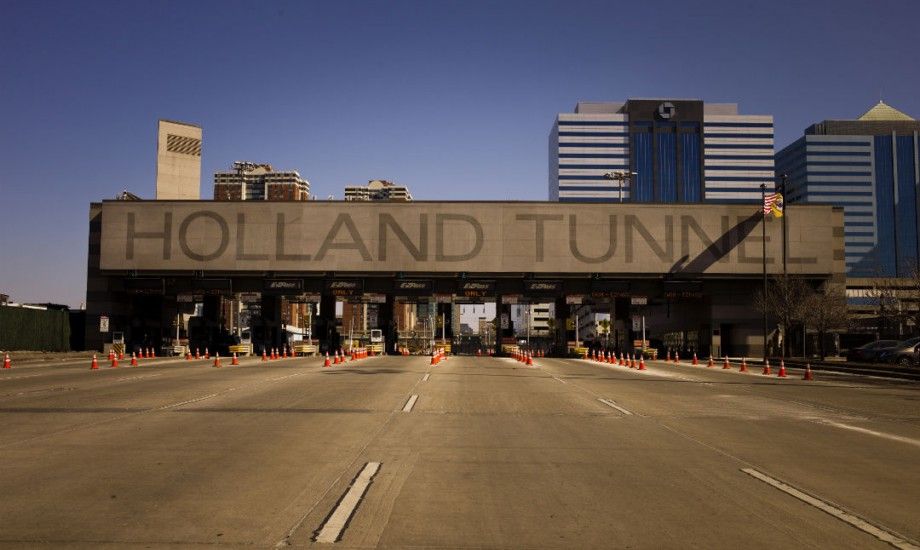In Forefront this week, Dax-Devlon Ross does the math on whether the Port Authority of New York and New Jersey — a super-sized, corruption-prone agency with $37 billion in assets, including the beleaguered World Trade Center site — is worth its enormous cost.
Yoel Weisshaus had a habit of chatting up toll collectors on the George Washington Bridge. At one point he even inquired about a job. Usually, though, the college student and holder of odd legal assistant jobs struck up conversation because he was short on cash and didn’t qualify for an E-Z Pass, since he didn’t have a bank account or credit card. The sticklers wrote Weisshaus tickets, but the compassionate ones waved him through.
“Even when the price was $6, it wasn’t easy on me,” said Weisshaus, a 32-year-old resident of New Milford, N.J., referring to toll prices prior to 2008. “It was $6 in gas, $6 going over the bridge. But I could manage it.”
In 2008, gas prices surged and the toll price ticked up to $8. The average middle-class commuter could shave a buck here or there and absorb the bump, but for a man getting by on minimum wage gigs, $2 represented a real cost with real implications. “I had to think about it and realize the impact it was having,” Weisshaus said.
He learned that yet another hike was on the way during one of his routine toll-collector encounters in August 2011. The new toll would rise to $12, including a $2 dollar penalty for cash users like him. Compounding matters, the tab would keep rising until, in 2015, it would hit $15, nearly double the minimum wage in New York and New Jersey. Weisshaus, a Bergen Community College accounting student — you may know him, in fact, as the Hasidic American Apparel model — did the math. Between 1967 and 2001 the toll had increased by 600 percent. Between 2001 and 2015 it would shoot up by 375 percent, outpacing consumer inflation nearly threefold.
What was driving such rapidly escalating costs? Barely three years had passed since the last toll hike and the country was still recovering from a financial collapse. Last fall, roughly 640,000 vehicles crossed the six Port Authority of New York and New Jersey bridges and tunnels daily, each forking over extortionate fees rivaled only by nearby MTA-owned bridges. All totaled, the agency’s bridges and tunnels alone produced upward of $500 million in profits each year.
Until then, Weisshaus hadn’t thought much about the agency collecting the toll. “It didn’t seem like a critical factor in my life,” he said. Once he started doing his homework, though, he stumbled across a Port Authority press release indicating that the tolls would subsidize a $33 billion capital campaign. It wasn’t bridges or roads that commuters would help pay for — it was the billion-dollar rebuild of the World Trade Center site.
“I got upset,” Weisshaus said. He was so upset he filed a federal lawsuit against the Port Authority.
He had no problem with the Port Authority rebuilding the World Trade Center. He just didn’t understand why it was his responsibility, as a commuter, to pay for it. The buildings wouldn’t change travel routines or make his ride any easier. Aside from being part of the agency’s vast and ever-expanding asset portfolio, the new office towers seemed to have little to do with moving people and goods around New York Bay — which, after all, is the Port Authority’s core job.
Eight days after Weishauss’ suit appeared on the docket, AAA of New York and AAA of North New Jersey raised the same question. On behalf of the chapters’ 2 million members, AAA filed a separate legal action against the tolling. While Weishauss’ claim centered on the amount he would have to pay, the nation’s oldest and largest auto association honed in squarely on the World Trade Center.
“The Authority is attempting to burden commuters and travelers with public expenditures that are in no way related to transportation,” AAA New York vice president Marta Genovese said in a statement announcing the suit. The lawsuit’s aim was to roll back the toll to the 2008 figure, a rate based on transportation needs that had nothing to do with trophy real estate in Lower Manhattan.
A bi-state agency with $37 billion in assets including New Jersey’s largest waste treatment facilities, seven ports and terminals, six extremely high-trafficked bridges and tunnels, three international airports, and the beleaguered 16-acre World Trade Center site, the Port Authority is a regional powerhouse on par with few others. It directly employs nearly 7,000 people and indirectly supports another 550,000 regional jobs generating $23 billion in annual wages and $80 billion in annual economic activity. Its shipping ports can reach 20 percent of the country’s people within eight hours. Looking beyond its practical functions, the agency — created by Congress in 1921 as a Progressive-era solution to political corruption — is a massive political machine, evidenced most recently by New Jersey Gov. Chris Christie’s Bridgegate scandal in which Port Authority traffic controllers were used to exact political revenge on the mayor of Fort Lee.
Indeed, if you live anywhere on the East Coast or buy any mass-produced objects that pass through there, the Port Authority is a part of your life — and more pointedly, a largely invisible line item in your budget. While most of us begrudgingly pay the tolls today, how will we feel in 2015 when the rates go up again? How about in 2021, when a new capital plan takes hold and there is another increase? How long will we will able to afford to keep the Port Authority?
To read more, subscribe to Forefront. Already a subscriber? Click here to continue reading.
















